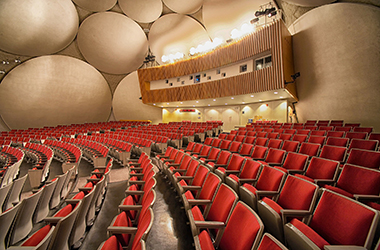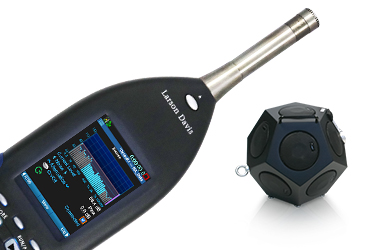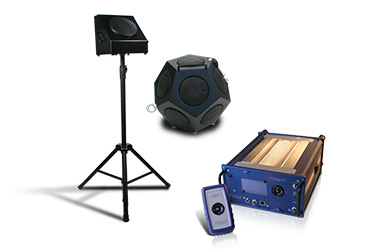Main Menu
- Home
- Products
- Applications
- Product Support
- Service
- Learn
- About Us
- Contact Us
 Measurements to evaluate and improve Building Acoustics are
typically made to analyze and design noise control from room to room or from outside to inside. Noise sources such as music systems, televisions, appliances, traffic, aircraft, and manufacturing are all around us. The field of building acoustics evaluates and designs the materials and methods to isolate us all from these sound sources when we are at work, resting, or enjoying leisure time. The resulting data is useful for evaluating compliance with building codes and for proposing
countermeasures for areas of concern. These measurements often involve creating and measuring an artificial sound source and then measuring the resulting noise in receiver locations.
Measurements to evaluate and improve Building Acoustics are
typically made to analyze and design noise control from room to room or from outside to inside. Noise sources such as music systems, televisions, appliances, traffic, aircraft, and manufacturing are all around us. The field of building acoustics evaluates and designs the materials and methods to isolate us all from these sound sources when we are at work, resting, or enjoying leisure time. The resulting data is useful for evaluating compliance with building codes and for proposing
countermeasures for areas of concern. These measurements often involve creating and measuring an artificial sound source and then measuring the resulting noise in receiver locations.
Larson Davis offers the sound source equipment, the sound level meters to record the source and receiver locations, and the software to calculate and report important metrics.
In the field of Room Acoustics, measurements are made to help determine how sound is created, propagated, absorbed, and heard by an audience in an enclosed space. This enclosed space can be a house, apartment, restaurant, office, workshop, factory hall, lecture room, auditorium, concert hall, transportation terminal, etc. Generally, these measurements are made to provide information about the quality of the sound as perceived by the audience.
Reverberation Time is the single most important parameter used to describe Room Acoustics. However, parameters describing music quality, speech intelligibility, and frequency-based performance are also important.
 Reverberation Time-Enabled Sound Level Meter
Reverberation Time-Enabled Sound Level Meter
Model 831C-RA
Whether for performance venues, architectural measurements, or workplace acoustics, reverberation time is a key parameter for characterizing a room. A long reverberation time can make speech less intelligible, and music can become garbled. Too short a reverberation time can muffle speech and make a room sound “thin”. The 831C-RA firmware option adds reverberation measurement and calculation functionality to the Model 831C-RA sound level meter.
 Sound Sources
Sound Sources
Series BAS
A wide range of sound sources are available for your application. With both omnidirectional and directional sound sources, as well as impulsive sources and tapping machines, these units complement our Reverberation Time-Enabled Sound Level Meters to offer you an easy-to-use Building and Room Acoustics test setup.